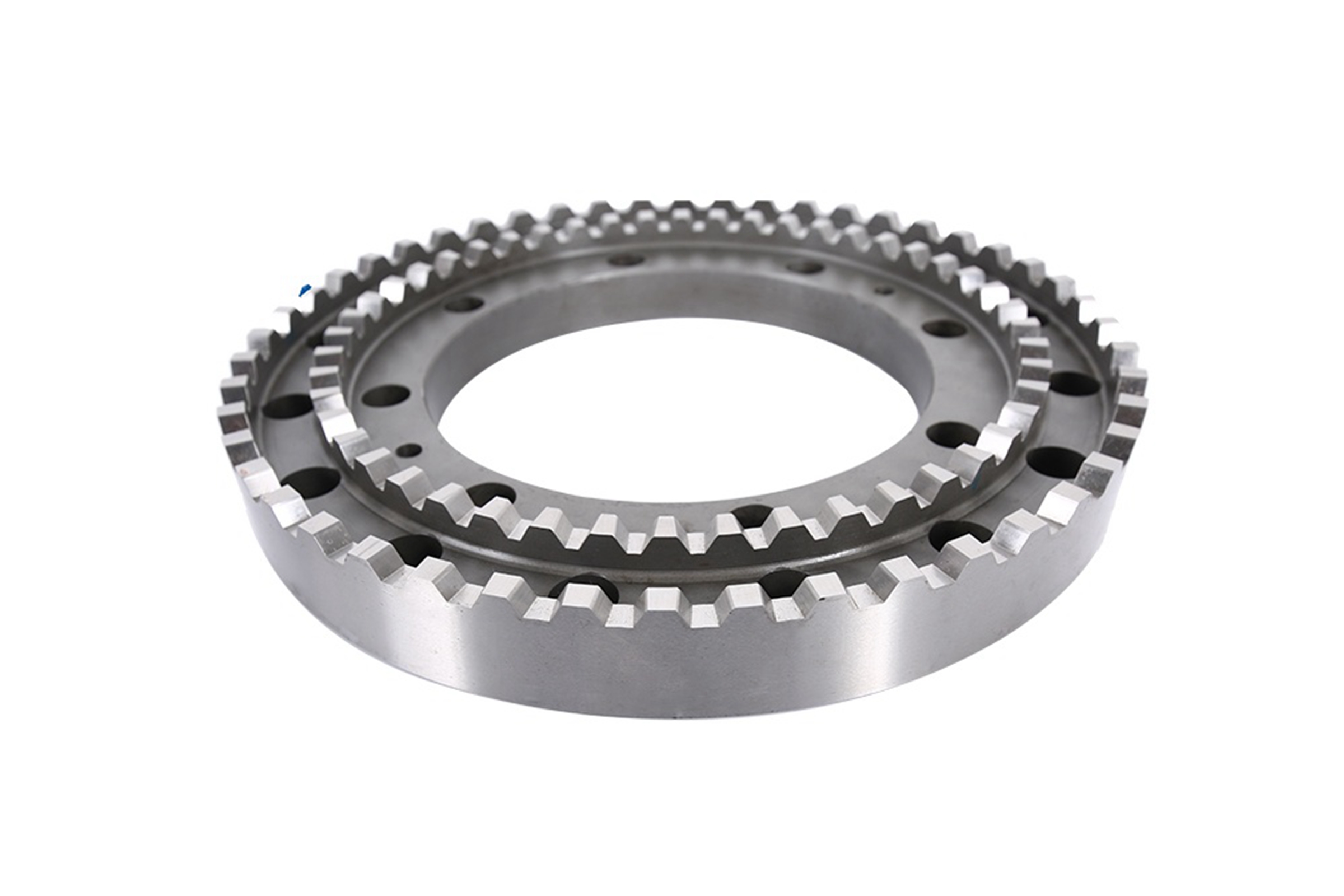FGH96 Powder Metallurgy Turbine Turbine Disc
Introduction
The FGH96 powder metallurgy turbine disc delivers exceptional high-temperature performance (up to 750°C) and mechanical integrity (tensile strength exceeding 1400 MPa), meeting stringent demands of the aerospace and power generation sectors. At Neway AeroTech, we utilize advanced powder metallurgy and precise forging technologies to manufacture turbine discs exhibiting superior fatigue resistance, dimensional precision (±0.02 mm), and structural uniformity.
Our comprehensive production approach ensures turbine discs operate reliably under extreme cyclic loading conditions, maximizing performance in challenging applications.
Core Technology of FGH96 Powder Metallurgy
Powder Production (Argon Atomization): Nickel-based alloy powder produced via argon atomization, ensuring uniform spherical particles (<50 µm) for optimal density and consistency.
Powder Screening and Blending: Rigorous screening controls particle distribution; precise blending maintains alloy composition uniformity, enhancing mechanical and thermal properties.
Hot Isostatic Pressing (HIP): Alloy powders consolidated under high pressures (100 MPa) and temperatures (~1150°C), achieving porosity <0.1% for dense microstructures.
Billet Forging: Pre-consolidated billets forged at controlled temperatures (~1050°C) and pressures to achieve refined grain structures and tensile strengths ≥1400 MPa.
Heat Treatment Optimization: Solution annealing and aging processes (~1080°C annealing, 760°C aging) enhance creep resistance, fatigue strength, and thermal stability.
Precision Machining: High-precision CNC machining achieves dimensional accuracy within ±0.02 mm, ensuring intricate design compliance.
Material Characteristics of FGH96
Property | Specification |
|---|---|
Alloy Type | Nickel-based powder metallurgy alloy (FGH96) |
Tensile Strength | ≥1400 MPa |
Yield Strength | ≥1200 MPa |
Operating Temperature | Up to 750°C |
Creep Resistance | Excellent at high temperatures |
Fatigue Strength | Exceptional cyclic durability |
Density (HIP consolidated) | ≥99.9% (porosity <0.1%) |
Grain Size | ASTM 10 or finer |
Case Study: FGH96 Powder Metallurgy Turbine Disc
Project Background
A major aerospace engine manufacturer required precision-engineered turbine discs capable of sustaining high-speed rotations (>15,000 RPM), extreme temperature cycles (up to 750°C), and rigorous fatigue conditions. The critical demands included enhanced dimensional accuracy, mechanical strength, and reliability under continuous operational stress.
Common Turbine Disc Models and Applications
High-Pressure Turbine Disc (HPT Disc): Engineered for aerospace turbines, handling rotational speeds >15,000 RPM and temperatures up to 750°C, ensuring robust structural integrity.
Low-Pressure Turbine Disc (LPT Disc): Provides reliable operation at lower temperatures (600–700°C) but demands exceptional fatigue strength under cyclic loading conditions.
Intermediate-Pressure Turbine Disc (IPT Disc): Balances mechanical performance and thermal stability, crucial for intermediate sections within aero-engines operating around 700°C.
Industrial Gas Turbine Disc: Designed for stationary power generation applications, ensuring long-term durability, creep resistance, and high reliability at operational temperatures up to 700°C.
Selection and Structural Features of Turbine Discs
FGH96 alloy selected for superior mechanical properties (≥1400 MPa tensile strength), creep resistance, and thermal stability. Structural enhancements include optimized disc geometries, refined grain structures, and precisely engineered attachment points for turbine blades, maximizing fatigue performance.
Turbine Disc Component Manufacturing Solution
Powder Atomization: Nickel-based powders (<50 µm particle size) produced by argon atomization, ensuring consistent chemical and physical properties.
Hot Isostatic Pressing (HIP): Powder consolidation at ~1150°C and 100 MPa ensures dense microstructure (≥99.9% density), eliminating internal voids and porosity.
Forging & Grain Refinement: Controlled forging (~1050°C) refines microstructures to ASTM grain size 10 or finer, enhancing strength (≥1400 MPa tensile) and fatigue resistance.
Advanced Heat Treatments: Solution annealing (~1080°C) and aging (~760°C) optimize tensile strength, yield strength, and creep resistance.
Precision CNC Machining: High-accuracy machining achieves precise dimensions within ±0.02 mm, ensuring aerodynamic profiles and attachment accuracy.
Surface Treatment (Shot Peening): Specialized shot peening treatments improve fatigue strength by inducing compressive surface stresses, significantly extending component lifespan.
Non-Destructive Testing (NDT): Radiographic (X-ray inspection), ultrasonic, and eddy current methods verify structural integrity and defect-free status.
Rigorous Performance Testing: High-cycle fatigue testing (>10^7 cycles), creep testing, and spin-testing validate real-world operational reliability.
Core Manufacturing Challenges
Achieving stringent dimensional tolerances (±0.02 mm).
Maintaining consistent grain size (ASTM 10 or finer).
Minimizing porosity levels (<0.1%) in consolidated billets.
Ensuring consistent mechanical and thermal properties under high-stress conditions.
Results and Verification
Dimensional Accuracy Verification: Precision verified using advanced Coordinate Measuring Machine (CMM), confirming ±0.02 mm accuracy.
Mechanical Performance Testing: Tensile and yield strengths consistently exceeded requirements (≥1400 MPa tensile, ≥1200 MPa yield), demonstrating superior mechanical integrity.
Fatigue and Creep Resistance Validation: High-cycle fatigue tests (>10^7 cycles) and creep tests at 750°C confirmed outstanding long-term stability.
Microstructural Analysis: Metallographic inspections confirmed grain refinement (ASTM 10 or finer) and porosity <0.1%, ensuring optimal microstructural properties.
Non-Destructive Evaluation: Comprehensive NDT validated the absence of internal defects, meeting rigorous aerospace and industrial quality standards.
FAQs
What are the primary advantages of using FGH96 alloy for turbine discs?
How accurate are the dimensional tolerances in powder metallurgy turbine discs?
What testing methods ensure quality and reliability in turbine disc manufacturing?
Can Neway AeroTech provide customized turbine disc designs and specifications?
What industries commonly utilize FGH96 powder metallurgy turbine discs?

